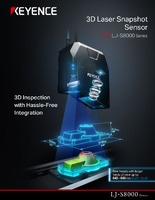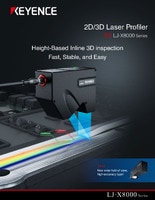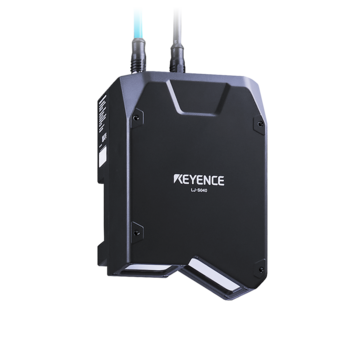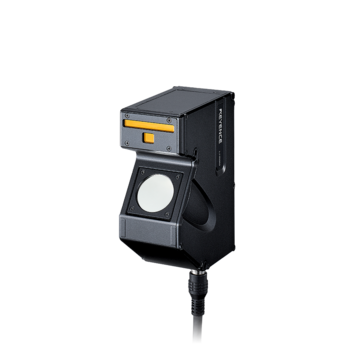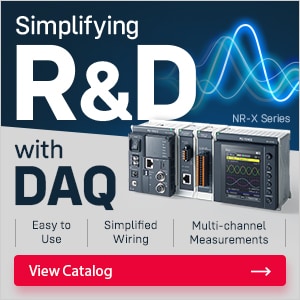Measurement Sensors
Dimension Measurement
Displacement Measurement
4 Ways 3D Measurement Enhances Automotive Manufacturing

Automotive 3D scanners allow manufacturers to bridge the gap between physical components and digital processes. As vehicle design grows increasingly complex, advanced technologies are being adopted to automate workflows and improve quality control. From creating flawless prototypes to expanding safety monitoring, these tools are providing results that were once unattainable through traditional methods.
What is 3D Measurement in Automotive Manufacturing?
3D measurement is the process of capturing and analyzing the dimensions, geometry, and surface details. In the automotive industry this measurement includes 3D scans of all parts and components to create a digital twin of the final product. Having access to fully functional digital models allows engineers to have a physical object exist in a digital environment where it can be tested and analyzed. For example, if a part becomes damaged or worn too quickly, the engineer can scan the part and capture it with micrometer precision. This helps preserve the part’s design for producing a replacement, and it helps track redesigns in the pursuit of better performance.
Types of Automotive 3D Scanning
There are a variety of technologies involved in taking 3D measurement for automotive industries.
- Laser Scanning : This technology uses a laser triangulation technique to measure an object’s geometry. With this method, the sensor head projects a laser beam across a surface, and the laser reflects back onto a CMOS to understand the surface height characteristics. With a scanning motion, 2D profiles are compiled into a 3D model on the vehicle.
- Structured Light Scanning : Patterns of light are projected onto a vehicle, and the scanner records how they deform across its surface. Cameras then interpret these deformations to build 3D models. This method is particularly effective for vehicles with complex geometry or interesting textures.
- Photogrammetry : This process involves combining multiple 2D images taken from a variety of angles to generate 3D models.
By using 3D scanners, manufacturers can work in both physical and simulated image environments. When manufacturing a new engine part, all components can be scanned to ensure quality needs are met. These scanners also offer real-time data collection and give immediate feedback.
We’re here to provide you with more details.
Reach out today!
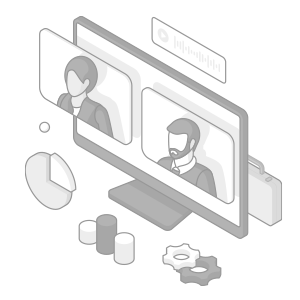
Key Benefits of Automotive Measurement & 3D Scanners
With more manufacturers adopting advanced automotive 3D scanners, they also gain access to a host of advantages that traditional measurements cannot match. The rise of 3D measurement in the automotive industry has redefined how production lines approach design and quality assurance.
Unmatching Precision and Accuracy
Many modern 3D scanners for automotive manufacturing deliver results as precise as 0.02 mm and capture the smallest deviations. This level of precision helps engine parts and aerodynamic panels maintain their tight tolerances. High-resolution scans also identify flaws early in the production process, which helps minimize defects further down the line.
Cost Savings
3D scanners significantly reduce the costs associated with automotive manufacturing. When the need for extensive physical prototyping and time-consuming is eliminated, the price of production plummets. Detailed virtual models can be used to simulate tests and optimize design in a digital space.
Improved Quality Control
High-resolution scans can be used to verify that every component, from fuses to alternators, meet stringent quality standards. With the aid of a digital twin, engineers have the ability to compare assembly systems or identify whether or not a surface irregularity will affect functionality.
How 3D Measurement Scanning Improves Precision for Automotive Manufacturing
Precision is the end goal for 3D measurement for automotive manufacturing. Unlike traditional methods, such as calipers and micrometers, which only measure specific points, automotive 3D scanners collect millions of data points across an object’s surface. This data provides manufacturers with the tools to meet their high industry standards.
Reverse engineering is another area where vehicle 3D scanning has transformed precision. When legacy parts or old prototypes lack digital documentation, high-resolution scans can recreate exact digital models. This is especially important when it comes to needing out of production parts for classic car restoration or to improve on an existing product.
The Role of 3D Measurement in Vehicle Quality Control
One of the main advantages of vehicle 3D scanning is its ability to detect defects and deviations early in the production cycle. The final product will not only perform to expectations, but it will do so without compromising the safety of the customer. 3D measurement sensors for automotive manufacturing have allowed engineers to reevaluate how they identify and address defects. With the ability to compare CAD models to a physical component, failure points can be immediately identified and redesigned.
3D scanning has also improved efficiency through automation. Scanning systems can analyze components and provide real-time feedback to production teams. This helps minimize downtime as the line does not need to be shut down to evaluate the component. 3D measurement also contributes to a more sustainable industry. Early flaw detection means there is a reduction in rework, and it allows manufacturers to conserve resources.
We’re here to provide you with more details.
Reach out today!

Applications of Automotive 3D Scanning in Manufacturing
3D scanners have revolutionized many aspects of automotive manufacturing. Whether that is design, customization, or overall quality control. Some of the more impactful applications include:
Digital Benchmarking and Vehicle Assessment
In benchmarking, automotive manufacturers evaluate the performance of components and assemblies produced by different vendors. The very best of these are chosen to be integrated into each manufacturer's design. By utilizing automotive 3D scanners, manufacturers can gauge and assess each part with ease and without having to rely solely on manual and handson assessments.
Component Restoration and Reverse Engineering
When it comes to restoring a legacy system or needing an out-of-production part, 3D scanning has reopened the market for hard-to-find parts. Engineers can scan existing components, regardless of wear or damage, and recreate the part for manufacturing. This technology also helps promote the cost-effective production of unique or small-batch parts.
Vehicle Customization and Bespoke Modifications
Customization like suspension upgrades or adding features to interiors can use 3D measurement for automotive scans to reconfigure existing structures through digital environments. Because the scanners capture precise data from the original, engineers can modify designs with absolute confidence. An example of this is the conversion of existing gas vehicles to electric or vegetable oil which would require precise measurements to ensure the new system was able to integrate seamlessly.
From restoring classic parts to building the next state-of-the-art design, automotive 3D scanning has transformed every aspect of automotive manufacturing. 3D measurement for automotive application has brought enhanced efficiency and made customization more accessible.
At KEYENCE, we’re constantly innovating to meet the needs of tomorrow. Whether you’re optimizing your production process or driving innovative designs, KEYENCE is here to keep you ahead of the curve. Our 3D scanners for automotive help you tackle challenges across every stage of your manufacturing process.
With our comprehensive support and global expertise, we're committed to your excellence. Contact us today to explore how KEYENCE’s 3D measurement for automotive solutions like Laser Displacement Sensors can transform your processes!
Contact us to learn more about how our advanced technology can help take your business to the next level.
Contact Us
Related Products
Applications
Dimension Measurement
- Thickness and Width Measurement
- Step Height Measurement
- Inner and Outer Diameter Measurement
- Measuring Angles
- Meandering/Edge Measurement
Displacement Measurement
- Positioning and Stroke Length Measurement
- Vibration and Runout Measurement
- Deflection Measurement
- Measuring Eccentricity

